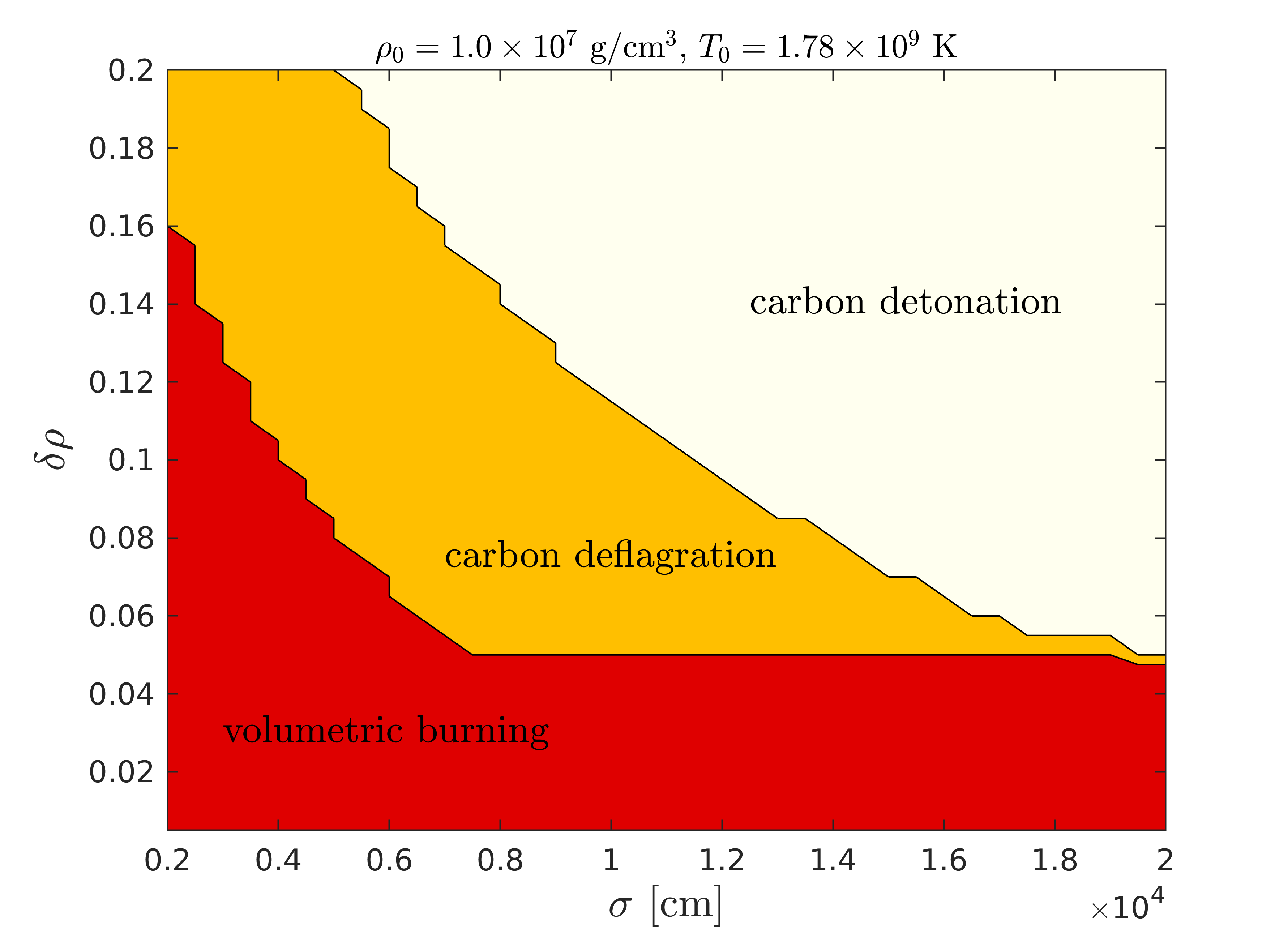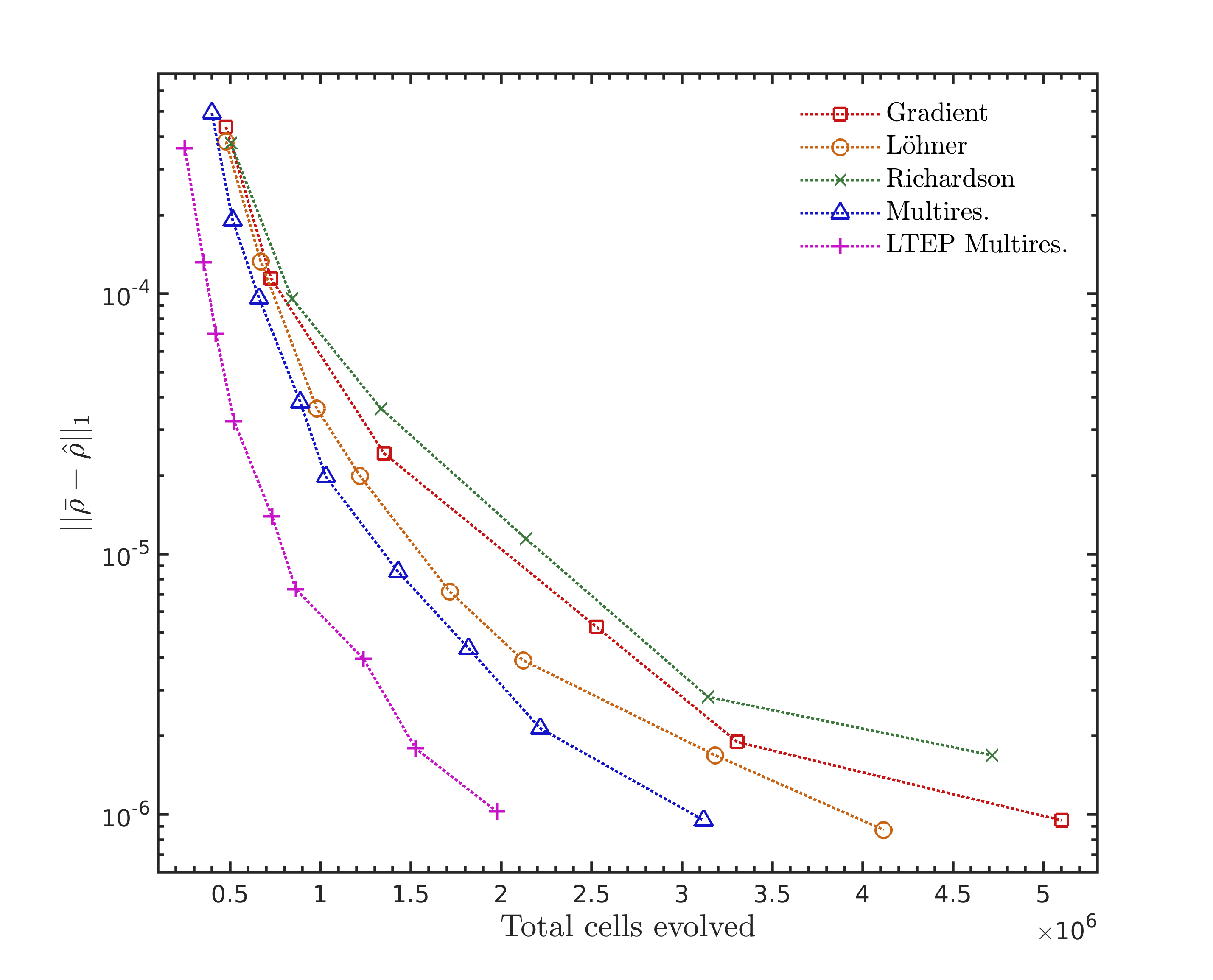Brandon Gusto
Doctoral student
Dept. of Scientific Computing
Florida State University
email: blg13@my.fsu.edu
resume: bgusto.pdf

Overview
I am a doctoral student in the Department of Scientific Computing at FSU and a DoD-SMART scholar with a background in mechanical engineering and applied mathematics. My research focuses on the development of efficient numerical methods for the simulation of reactive flows, as well as the use of data-driven techniques for analyzing and understanding combustion phenomena.
Adviser: Dr. Tomasz Plewa
Research Projects
A data-driven approach to deflagration-to-detonation modeling in thermonuclear supernovae
We aim to construct a physics-motivated model of deflagration-to-detonation transition (DDT) in application to explosions of thermonuclear supernovae (SN Ia). The DDT mechanism has been postulated as the necessary physics process to obtain qualitative agreement between SN Ia observations and computational explosion models. This work builds upon a series of studies of turbulent combustion that develops during the final stages of the SN explosion. These studies indicate that DDT in SN Ia is possible via the Zel'dovich reactivity gradient mechanism. We investigate the Zel'dovich mechanism with a series of direct numerical simulations (DNS) for a range of conditions expected to exist in the dense white dwarf plasma. We use the results of these well resolved simulations to construct a data-driven sub-grid scale model (SGSM) of DDT for the large-eddy simulation (LES) scales in SN Ia. The SGSM is implemented using a Keras/Tensorflow-based artificial neural network (ANN), trained on the aforementioned DNS database, and integrated into our supernova simulation code, FLASH/Proteus. The model is evaluated both in the training environment as well as in a series of reactive large-eddy simulations. We analyze the performance of the SGSM in terms of computational efficiency and accuracy of the classification of prospective DDT kernels. In the future, the SGSM model will be applied to multi-dimensional simulations of reactive turbulence, RTI-unstable deflagrations, and integrated SN Ia explosion models. The integrated SN Ia explosion models will require the multi-scale extension of the SGSM to reach the large spatial scales present in those models.

Classification of simulations of one-dimensional Gaussian perturbations of varying amplitude and variance. These simulation results inform a neural network classifier.
On the practical efficiency of error control strategies for adaptive mesh refinement simulations
Adaptive mesh refinement (AMR) has become an indespensible tool in modeling multi-scale applications ranging from aerodynamics to stellar evolution. However, the errors associated with AMR strategies are often not well accounted for, and adequate control over the solution error is seldomly demonstrated. In practice modelers must often make choices based on heuristic arguments and past experience. In this work we review the numerous sources of error present as well as the various strategies available to control them. We present a detailed study comparing the efficiency of each approach for a select set of problems ranging from pure hydrodynamics to turbulent combustion.

Solution error versus the total number of cells evolved for several AMR strategies tested on the nonlinear, one-dimensional soundwave problem. Multiresolution methods demonstrate the highest efficiency for this problem.
A hybrid adaptive multiresolution (HAMR) approach for reactive flows
Computational studies that use block-structured adaptive mesh refinement
(AMR) approaches suffer from unnecessarily high mesh resolution in regions
immediately adjacent to important solution features. This deficiency may be
a major factor limiting the performance of AMR codes. In this work a novel
hybrid adaptive multiresolution (HAMR) approach to AMR-based calculations is
introduced to address this issue. The multiresolution (MR) smoothness
indicators are used not only to adapt the mesh, but also to decrease the
computational cost of individual physics solvers in regions identified as
smooth by replacing direct calculations with MR interpolation according to
prespecified accuracy constraints. The accuracy of this procedure is shown
to be consistent with that of the MR-driven AMR. The performance of the HAMR
scheme is demonstrated for a range of test problems, from one-dimensional
hydrodynamics to multidimensional turbulent combustion.
Log of MR detail coefficients, and corresponding MR-driven AMR mesh (with 6 levels of refinement) for the Hawley-Zabusky problem. Many cells are on finest levels of the mesh due to the AMR structure, but the coefficients are small nearby, inviting the use of interpolation of physics quantities (e.g. fluxes) from coarser levels.
Publications
B. Gusto and T. Plewa, "A Hybrid Adaptive Multiresolution Approach for the Efficient Simulation of Reactive Flows," Computer Physics Communications, accepted, 2022.